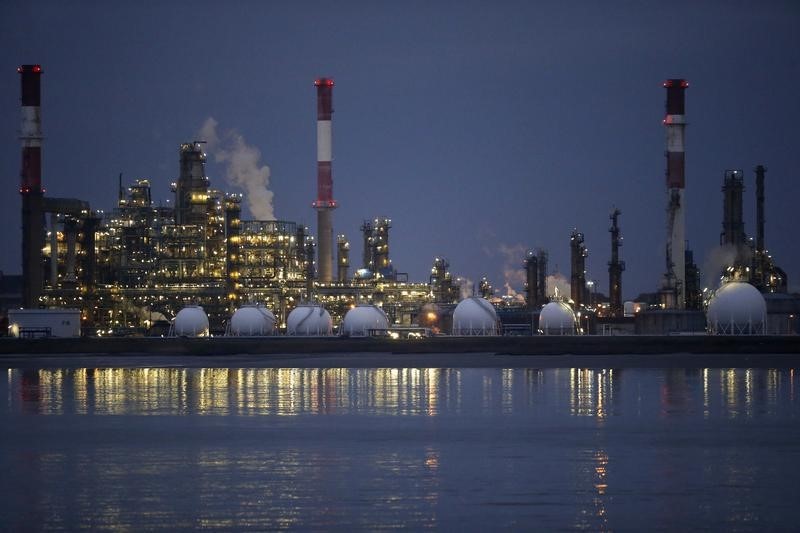* U.S. crude stocks down by 5.6 mln barrels at 448.1 mln
* But U.S. crude production rises 25,000 bpd to 9.71 mln bpd
* Gasoline stocks gain 6.8 mln barrels to 220.9 mln (Adds comment, updates prices)
By Henning Gloystein
SINGAPORE, Dec 7 (Reuters) - Oil prices inched higher on Thursday after a data report showed a decrease in U.S. crude inventories, but rising gasoline stocks and crude production weighed on the market.
U.S. West Texas Intermediate (WTI) crude futures were at $56.18 a barrel at 0424 GMT, up 22 cents, or 0.4 percent from their last settlement.
Brent crude futures LCOc1 , the international benchmark for oil prices, were at $61.49 a barrel, up 27 cents, or 0.44 percent.
Traders said the higher prices came as U.S. crude oil inventories fell by 5.6 million barrels in the week to Dec. 1, to 448.1 million barrels C-STK-T-EIA , putting stocks below seasonal levels in 2015 and 2016. API/S EIA/S
The slightly higher prices also came after a big sell-off in late U.S. trading.
"WTI prices cratered (on Wednesday) despite a drop in weekly crude inventories ... Traders were more concerned about the steep rise in gasoline inventories," said Stephen Innes, head of trading for Asia-Pacific at futures brokerage OANDA in Singapore.
Gasoline stocks USOILG=ECI rose 6.8 million barrels, to 220.9 million barrels, according to the report from the U.S. Energy Information Administration (EIA), much more than analyst expectations in a Reuters poll for a gain of 1.7 million barrels. suggests that refiners may not need to process as much crude in the future," ANZ said in a note on Thursday.
"The EIA report also showed that U.S. production increased again," the bank said.
U.S. crude production C-OUT-T-EIA climbed by 25,000 barrels per day (bpd) to 9.71 million bpd, the highest since monthly figures showing the United States produced more than 10 million bpd in the early 1970s. U.S. output threatens to undermine efforts led by the Organization of the Petroleum Exporting Countries (OPEC) and Russia to bring production and demand into balance following years of oversupply. Vijayakar, managing director of energy consultancy Trifecta warned there were "darker shadows over the pace of rebalancing, if at all any is taking place."
<^^^^^^^^^^^^^^^^^^^^^^^^^^^^^^^^^^^^^^^^^^^^^^^^^^^^^^^^^^^ GRAPHIC: U.S. oil production and storage levels
http://reut.rs/2AyK29W
^^^^^^^^^^^^^^^^^^^^^^^^^^^^^^^^^^^^^^^^^^^^^^^^^^^^^^^^^^^>
